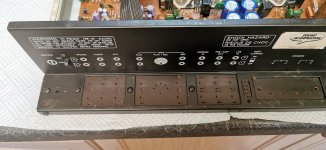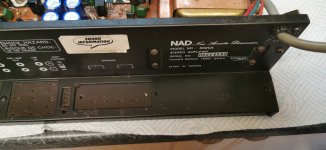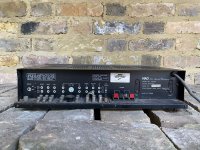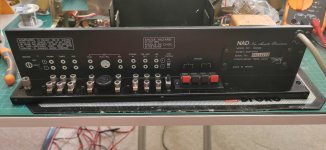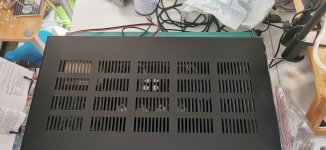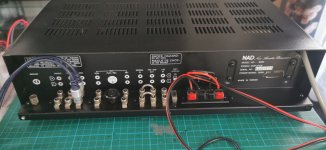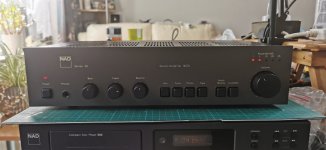got a realy dirty one here, and rusty so i thought i would strip it back and clean it up/respray it see what it comes out like
ive already replace dthe filter caps and sorted out the idle/centre voltages
ive already replace dthe filter caps and sorted out the idle/centre voltages
Attachments
well i brought it cheap as 'not working' and found the 2 driver transistors missing uh??? and no fuse in the mains plug
most people would have scrapped it for spares, but it ended up at poundy's restoration services lol😉 and now she lives on to give someone some enjoyment 👍
most people would have scrapped it for spares, but it ended up at poundy's restoration services lol😉 and now she lives on to give someone some enjoyment 👍
A much better fate than the scrap heap.well i brought it cheap as 'not working' and found the 2 driver transistors missing uh??? and no fuse in the mains plug
most people would have scrapped it for spares, but it ended up at poundy's restoration services lol😉 and now she lives on to give someone some enjoyment 👍
well i brought it cheap as 'not working' and found the 2 driver transistors missing uh??? and no fuse in the mains plug
So well and truly got at then 😀
Maybe they nicked the bits for another, it happens, and now packed up time to chill in the garden for a bit👍
Perhaps 😀 It reminds me of TV servicing back in the day.
Customers do all sorts of weird stuff with things and then will turn round and say 'well it went like that while we were listening to it or watching it'.

Customers do all sorts of weird stuff with things and then will turn round and say 'well it went like that while we were listening to it or watching it'.

I remember my mates dad, he worked reparing tvs years ago. Dont know much about old tvs but I remember him talking about redand green guns, what ever they arePerhaps 😀 It reminds me of TV servicing back in the day.
Customers do all sorts of weird stuff with things and then will turn round and say 'well it went like that while we were listening to it or watching it'.

In the CRT (red, blue, green), to shoot the electrons at the screen.I remember my mates dad, he worked reparing tvs years ago. Dont know much about old tvs but I remember him talking about redand green guns, what ever they are
Giveb the build quality of the NADs, i expect many more have been used as parts to keep the ones running, running. I have to get my 7020 back into full working condition, i hope i don’t have to use parts from my (also flaky at this point) 1020.
A classic, good on you for making one whole again.
dave
A classic, good on you for making one whole again.
dave
'Just love that exposed PCB with naked connector sockets, terminals with (typically) broken soldering and corrosion of the original 3020 rear panel, don't we? They're certainly classic in the sense that they're still a popular, 40 odd years vintage product but the survivors would surely be a reminder of how not to design a rear panel, however clever and cost-effective it was.
From the rear, this original model looks more like a makeshift patch bay but it does have the convenience of enabling you to read the printed PCB markings so you can make connections from the front side - though not all that helpful when they are under a layer of accumulated dust and grime which is typical of what you find at rear of many domestic audio systems but at it's worst here.
From the rear, this original model looks more like a makeshift patch bay but it does have the convenience of enabling you to read the printed PCB markings so you can make connections from the front side - though not all that helpful when they are under a layer of accumulated dust and grime which is typical of what you find at rear of many domestic audio systems but at it's worst here.
- Home
- Amplifiers
- Solid State
- NAD 3020A operation strip back
